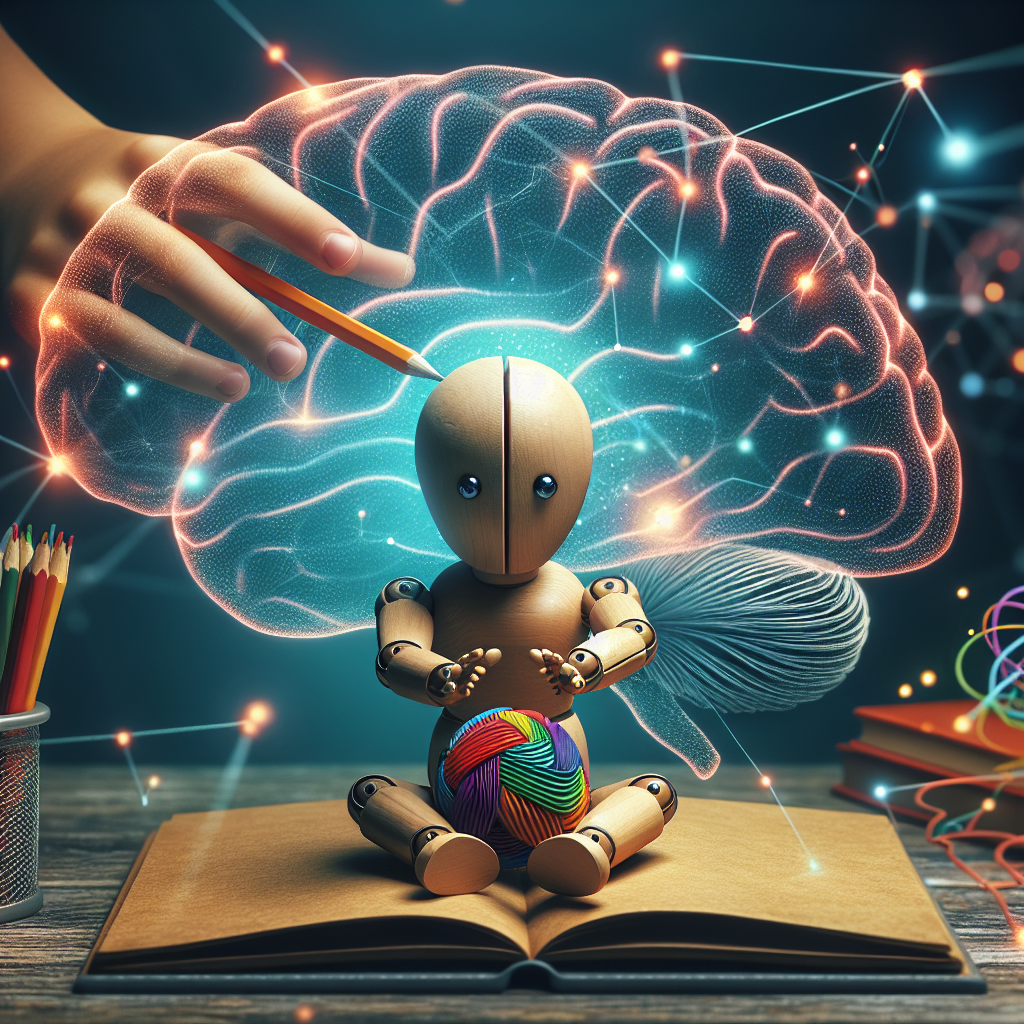
Introduction
Imagine a world where everything is fleeting, where the simple act of hiding a toy from a baby leads to profound confusion rather than excitement. This is the reality of infants before they grasp the concept of object permanence—the understanding that objects continue to exist even when they cannot be seen. The Psychology of Object Permanence: A Deep Dive into Early Cognitive Development not only illuminates a fundamental aspect of human cognition but also gives us a glimpse into how our minds evolve from infancy through adulthood. Understanding this concept is crucial, as it lays the groundwork for more complex cognitive abilities and social interactions throughout life.
As we embark on this captivating journey, we will explore the definition, historical perspectives, psychological theories, and real-world applications surrounding object permanence. Through engaging case studies and valuable insights, we aim to unlock the mysteries behind this critical development milestone.
The Concept of Object Permanence
What is Object Permanence?
Object permanence is the cognitive ability to understand that objects continue to exist even when they are not currently visible. This concept is first articulated by the Swiss psychologist Jean Piaget, who identified the phenomenon as a significant milestone in cognitive development. In Piaget’s theory, object permanence emerges in the sensorimotor stage, typically between 4 to 7 months of age, and is fully realized by 24 months.
The Importance of Object Permanence
Understanding object permanence is not just a matter of cognitive curiosity. It plays a critical role in social development, emotional stability, and even language acquisition. Before mastering this concept, infants may experience separation anxiety; they may cry when a parent leaves the room, assuming they will never return. Recognizing that a parent exists even when out of sight allows for healthier emotional development and secure attachments.
Historical Perspectives
-
Jean Piaget’s Theory: Piaget observed that infants lacked an understanding of object permanence until a certain age. He believed that as children interact with their environment, they gradually build a mental representation of objects.
-
The A-Not-B Task: Piaget’s famous experiment involved hiding a toy in one location (Location A), allowing the infant to retrieve it multiple times. Eventually, he moved the toy to a new location (Location B) and observed whether the infant would search in the original location, often leading to a failure in understanding that the toy still exists in a different place.
- Modern Interpretations: Recent studies have challenged some of Piaget’s conclusions, suggesting that infants may have a rudimentary understanding of object permanence even earlier than Piaget proposed. For instance, research using eye-tracking technology has shown that infants as young as 3.5 months exhibit surprise when an object disappears unexpectedly, hinting at a nascent grasp of the concept.
Investigating Object Permanence Through Case Studies
Case Study 1: The Peek-A-Boo Phenomenon
Context: A common game played with infants is peek-a-boo. Initially, babies react with surprise and joy when a parent reappears after being hidden. This joy indicates they are beginning to understand that the parent still exists despite being temporarily out of sight.
Analysis: This simple game is often seen as a playful interaction, but it offers insights into early cognitive development—the transition from ignorance to understanding. According to the Psychology of Object Permanence: A Deep Dive into Early Cognitive Development, this transition fosters not only cognitive understanding but also emotional bonding between the caregiver and child.
Case Study 2: Infant Eye-Tracking Studies
Context: In a controlled environment, researchers utilized eye-tracking technology to observe infants’ reactions to objects disappearing from view. Infants aged 3.5 to 4.5 months demonstrated significant surprise when objects vanished, suggesting an innate understanding of object permanence.
Analysis: This study reinforces the idea that understanding can occur at an earlier age than previously believed. It challenges Piaget’s timeline, suggesting a more complex developmental trajectory for cognitive skills. This aligns with the central theme of our exploration into the Psychology of Object Permanence: A Deep Dive into Early Cognitive Development, highlighting the diverse methodologies used to study infant cognition.
Related Table: Developmental Milestones of Object Permanence
| Age Range | Developmental Milestone | Description |
|---|---|---|
| 0-4 months | No Object Permanence | Infants do not search for hidden objects. |
| 4-8 months | Partial Object Permanence | Infants can gradually search for an object if they see it hidden. |
| 8-12 months | Full Object Permanence begins | Infants actively search for objects they remember. |
| 12-18 months | Mastery of Object Permanence | Ability to predict object placement based on prior experience. |
| 18-24 months | Symbolic Understanding | Begins to understand representations of objects, enhancing imaginative play. |
The Psychological Underpinnings
Cognitive Development Theories
-
Piaget’s Constructivism: According to Piaget, children construct knowledge through interaction with their environment. The development of object permanence is a fundamental aspect of this constructive process, allowing children to build mental schemas of objects.
-
Vygotsky’s Sociocultural Theory: Vygotsky emphasizes the role of social interaction in cognitive development. Object permanence can also be viewed through this lens, where caregivers model behaviors that reinforce understanding. For example, caregivers may explain where the toy is when it’s hidden, providing a learning opportunity that aligns with Vygotsky’s belief in social learning.
- Cognitive Neuroscience Perspectives: Recent advancements in neuroscience have highlighted specific pathways in the brain that are activated when infants attempt to retrieve hidden objects. Studies have noted that brain areas associated with memory and spatial awareness become increasingly active, shedding light on the neural basis of object permanence.
Emotional and Social Implications
-
Attachment Theory: Understanding object permanence is crucial for forming secure attachments. When infants realize that their caregivers exist even when they are not present, this knowledge fosters emotional security.
-
Behavioral Outcomes: Children with a strong grasp of object permanence tend to engage more in exploratory behaviors and play, which are essential for cognitive and social development.
- Language Acquisition: Mastering object permanence also correlates with language development. As children learn to identify and describe objects, their vocabulary and ability to communicate enhance significantly.
The Impact of Cultural Differences
Cultural Variations in Development
The concept of object permanence may manifest differently across cultures. In some collectivist societies, the emphasis on community and family may result in different experiences of object permanence.
-
Parental Interactions: In individualistic societies, parents may encourage independent exploration, while in collectivist cultures, they may focus on group interactions, influencing the way children develop their understanding of permanence.
- Environmental Factors: The types of play and interaction styles common in various cultures may also differ, affecting the way children understand hidden objects and permanence.
Real-World Applications
Parenting Strategies
-
Incorporating Play: Engaging in games like peek-a-boo or hide-and-seek encourages understanding of object permanence and builds trust between the caregiver and child.
- Modeling Behavior: Parents can enhance learning by verbalizing actions. For example, narrating where a toy is going when it’s hidden helps solidify the infant’s understanding.
Early Education Approaches
-
Curricular Design: Early childhood education programs often incorporate strategies that promote understanding of object permanence through varied activities, helping children navigate the physical world effectively.
- Social-Emotional Learning: Programs designed to enhance emotional intelligence frequently reference object permanence as it relates to understanding relationships and emotional stability.
Conclusion
As we have journeyed through the Psychology of Object Permanence: A Deep Dive into Early Cognitive Development, we’ve uncovered the multi-faceted aspects of this fundamental cognitive skill. From Piaget’s foundational theories to modern neuroscience and cultural variations, object permanence stands as a critical milestone in human development.
Understanding this concept empowers caregivers, educators, and researchers alike, providing insights that can enhance developmental outcomes for children. As we continue to explore the vast landscape of cognitive psychology, we must remember the significance of nurturing cognitive abilities from a young age.
In the spirit of fostering curiosity, we encourage readers to actively engage with infants in play-oriented scenarios that enrich their understanding of the world. The journey of cognitive development is just as remarkable as the destination.
FAQs
1. At what age does a child develop object permanence?
Object permanence typically begins to develop around 4 to 7 months, with full understanding emerging by 18 to 24 months.
2. How can I help my baby understand object permanence?
Engage in interactive games like peek-a-boo, and narrate actions when hiding or moving objects to provide verbal context.
3. What happens if a child does not develop object permanence?
Delays in developing object permanence can affect attachment styles and emotional regulation. If concerns arise, consulting a pediatrician or child psychologist is advisable.
4. Can cultural differences affect the development of object permanence?
Yes, variations in parenting styles and cultural practices can influence how and when children develop object permanence.
5. Is object permanence linked to other cognitive skills?
Yes, mastery of object permanence is related to other cognitive abilities, including memory, problem-solving, and language development.
This exploration into the Psychology of Object Permanence: A Deep Dive into Early Cognitive Development emphasizes the essential role this concept plays in our cognitive and emotional growth, providing actionable insights and fostering a deeper understanding of infant development.


















